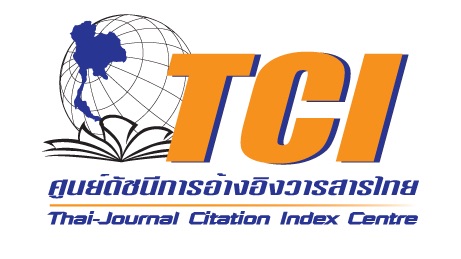Blue-Dyeing Technologies, in Cultural Heritage, Modern Fashion and Therapies in central Europe
Keywords:
Blue dyeing technologies, Cultural heritage, Modern fashion houses Therapy, Central Europe Painting and Printing Patterns, Textile and fashion industries Indigo and Woad treesAbstract
The cultural heritage of blue dyeing has become a tradition in the Central Europe. Many small textile and fashion industries competed with each other to select blue which is the most popular color. Continue the tradition of growing plants with cold dyeing techniques and the simple technology of painting and printing unique patterns on canvas in a long history, beginning with the Egyptians, China and India respectively. The blue from the indigo and woad trees are therefore valuable and provide a positive reflection of therapy. Gives blue chakras spiritual energy. It provides various medicinal and alternative healing properties, as well as becoming a symbol of elegance. In reviving traditional clothing, this proves that blue-dyed garments have remained in fashion throughout the centuries. Even Chinese companies have begun to produce Victorian dresses, the best selling historical clothing models of 2020. Dark blue era. It's the clothes of the elderly. Now the famous modern fashion houses are giving everyone a blue dress. In addition, today's blue dyeing cultural heritage offers tourists an opportunity to understand local arts from the source of indigo dyeing products and exhibited in fabric museums in Levoca (Slovakia) and in Papa (Hungary). Blue dyeing technologies have been widely developed in design across Europe, approximately 69 different formulas.
References
Azeemi, S., Iram, H., Younas, Q., & Azeemi, A. (2018). Effect of Blue Colour(453 nm Visible Range Radiation) on Anxiety in College Students. Journal Chinese Medicine, 9(1), 1-6.
Canva. (2021). The color wheel. https://www.canva.com/colors/color-wheel/9/1/2021
De Keijzer, M., Van Bommel, M. R., Keijzer, R. H. D., Knaller, R., & Oberhumer, E. (2012). Indigo carmine: Understanding a problematic blue dye. Studies in Conservation, 57(1), 87-95.
Farkas, E. (2004). Political resistance in Hungarian dress. The Journal of New York Folklore, 30(1-2), 42-45.
Fashionologiahistoriana. (2018). The stories of color blue. https://www.fashionologiahistoriana.com/costume-history-legends- -in-english/the-color-that-did- not-exist-before-blue 7/1/2021
Gyorikekfesto. (n.d.). Rólunk. http://gyorikekfesto.hu/01_rolunk.html 9/1/2021
Heller, E. (2009). Psychologie de la couleur: effets et symboliques (in French). Pyramyd.
Juwaheer, T. D., & Sahye, K. (2019). The Use of Colours in Marketing in Shopping Malls of Mauritius- A Gendered Approach. Journal of Marketing Development and Competitiveness, 13(3), 68-90.
Kekfestokovacs. (n.d.). Kékfestés. http://www.kekfestokovacs.hu/ 9/1/2021
Matthews, M. (n.d.). Shades of Victorian Fashion: Cerulean, Mazarine, Navy, and Blue. https://www.mimimatthews.com/2017/02/06/shades-of-
victorian-fashion-cerulean- mazarine-navy-and-blue/
Mayer, D. L., & Bhikha, P. R. (2014). The Historical Significance of Colour. Tibbinstitute-A Science of Medicine The Art Of Care.
McKinley, C. E. (2011). Indigo: In Search of the Colour that Seduced the World. Bloomsbury Publishing.
Miles, R. B., Lempert, W. R., & Forkey, J. N. (2001). Laser rayleigh scattering. Measurement Science and Technology, 12(5), 33-51.
Müllerott, H. J. (2017). 69 Rezepturen zur Bereitung der blauen Farbe oder zum Blaufärben aus 2 Jahrtausenden, Arnstadt, Thüringer Chronik-Verlag 9.
Museum. (2020). Museum of blue-dyeing - Pápa. http://www.museum.hu/museum/702/Museum_of_Blue_Dyeing?f19/08/2020
Munsell, A. (2014). Colors for Kids: Teaching Colors to Children. https://munsell.com/color-blog/teaching-colors-to-children/ 5/1/2021
O'connor, Z. (2011). Colour psychology and colour therapy: Caveat emptor. Color Research & Application, 36(3), 229-234.
Ranson, B. (2020). The true cost of colour: The impact of textile dyes on water systems. https://www.fashionrevolution.org/the-true-cost- of-colour-the-impact-of-textile-dyes-on-water- systems/7/1/2021
Szellemikulturalisorokseg. (2020). Blue-Dyeing Tradition in Hungary.http://szellemikulturalisorokseg.hu/index0_en.php?name=en_0_magyarorszagi_kekfestes_hagyomanya 11/8/2020
Wills, P. (2013). Colour healing manual: The complete colour therapy programme Revised edition. Singing Dragon.
Zentrum. (2014). Ezen a hétvégén: XV. Kékfestő Fesztivál Nagynyárádon.http://www.zentrum.hu/hu/2014/07/ezen-a-hetvegen-xv-kekfesto-fesztival-nagynyaradon/ 9/1/2021
Downloads
Published
How to Cite
Issue
Section
License

This work is licensed under a Creative Commons Attribution-NonCommercial-NoDerivatives 4.0 International License.







